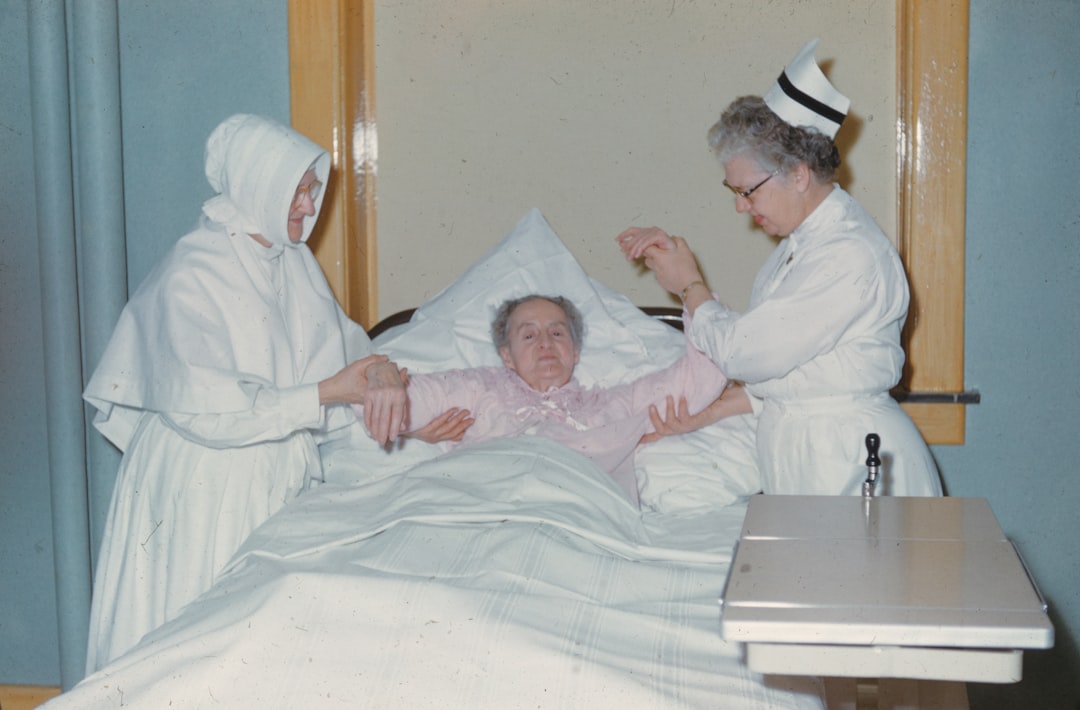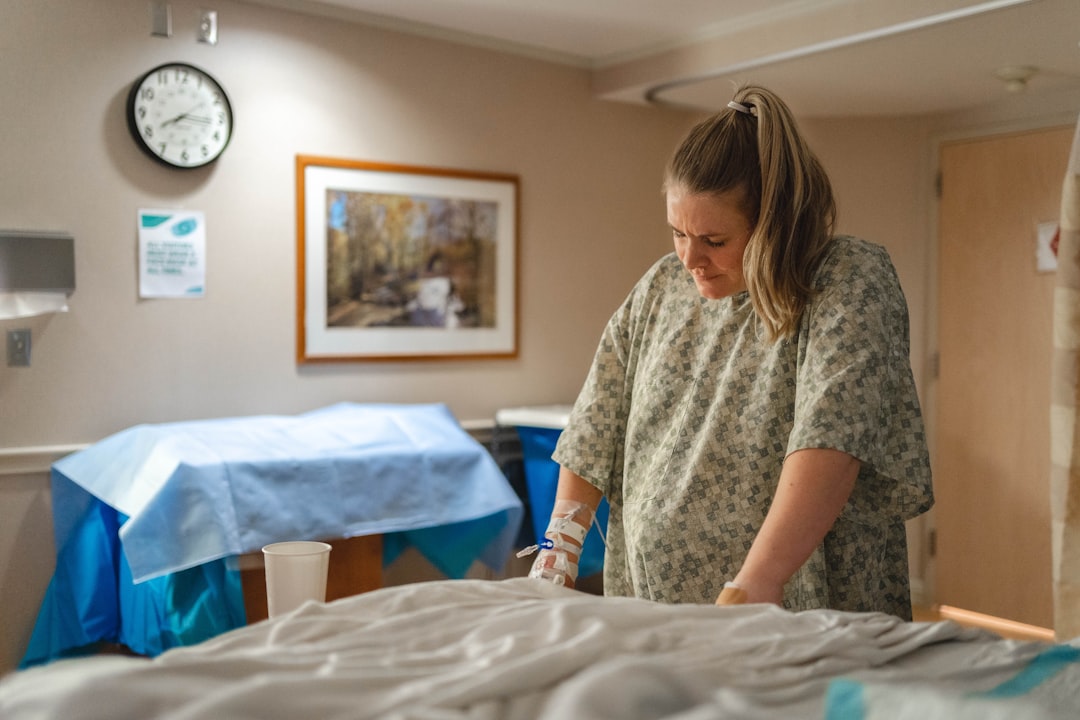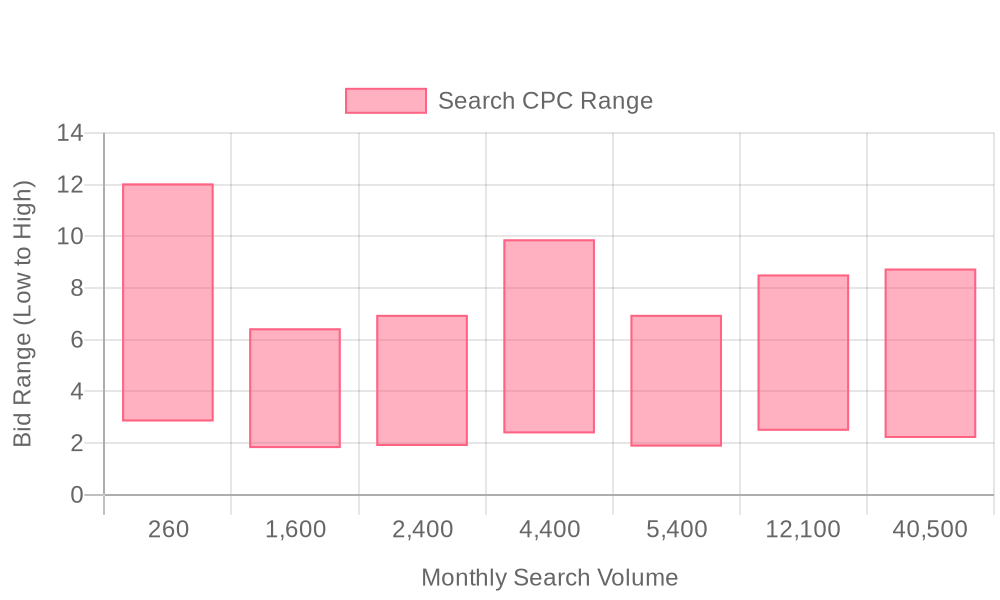
Supercharge your lead generation with a FREE Google Ads audit - no strings attached! See how you can generate more and higher quality leads
Get My Free Google Ads AuditFree consultation

No commitment
Supercharge your lead generation with a FREE LinkedIn Ads audit - no strings attached! See how you can generate more and higher quality leads
Get My Free Google Ads AuditFree consultation

No commitment
Supercharge your lead generation with a FREE Meta Ads audit - no strings attached! See how you can generate more and higher quality leads
Get My Free Google Ads AuditGet My Free LinkedIn Ads AuditGet My Free Meta Ads AuditFree consultation

No commitment
Supercharge your lead generation with a FREE Google Ads audit - no strings attached! See how you can generate more and higher quality leads
Get My Free Google Ads AuditFree consultation

No commitment
In today's complex marketing landscape, effective digital strategies are essential for B2B marketers and healthcare providers specializing in end-of-life care services. The challenge lies in capturing high-intent prospects who may not always convert through traditional methods. Missteps in tracking these prospects or keeping them engaged often result in missed opportunities. Google Ads plays a critical role in overcoming these issues by reaching decision-makers precisely when they're searching for hospice or palliative care solutions. For those in the end-of-life care industry, Google Ads offers a unique opportunity to bridge online visibility with offline service offerings: Target potential clients with precision, engage decision-makers at critical moments, and measure ROI accurately by tracking clicks to conversions, connecting digital interactions with real-world services.

Generating qualified leads for end-of-life care services through Google Ads demands a highly specialized approach rooted in actionable data. Healthcare marketers in this sector face unique challenges, including privacy compliance, sensitive messaging, and targeting prospects at critical decision-making moments. A robust, data-driven strategy ensures every ad dollar reaches families, providers, and referral networks actively searching for hospice, palliative, or long-term care solutions. For best practices and real-world examples, see how organizations are using Google Ads to educate about hospice care.
Missed opportunities often arise when high-value prospects visit your site but remain anonymous or untracked in your CRM. Addressing this requires integrated marketing intelligence that identifies visitors by company and intent, seamlessly connecting ad engagement with CRM records. When your marketing stack supports real-time visitor identification and syncs enriched audience lists directly into Google Ads, HubSpot, and Salesforce, you can prioritize outreach to decision-makers who have demonstrated genuine interest in end-of-life care services.
To maximize campaign impact, healthcare marketers must align Google Ads targeting with up-to-date audience data, ensuring creative assets and landing pages are tailored for conversion at every stage. Leveraging dynamic audience updates, advanced conversion tracking, and multi-channel attribution empowers teams to measure true ROI, shift budget to the highest-converting accounts, and continually optimize for cost efficiency. If you’re ready to put this strategy into action, get started for free with Sona to see how seamless data integration can drive high-quality leads for hospice, palliative care, and senior living services using Google Ads.

Digital marketing for end-of-life care services faces the unique challenge of reaching highly specific audiences at moments of urgent need. Traditional channels often fail to provide the intent signals and detailed attribution required to connect with families and professionals searching for immediate solutions. Leveraging intent signals can help marketers identify high-potential prospects more effectively.
Google Ads addresses these gaps by offering robust targeting capabilities and in-depth analytics. This platform enables providers to capture the attention of decision-makers who are actively researching end-of-life, hospice, or palliative care options. Real-time ad delivery ensures your message is seen precisely when families are evaluating care, driving higher engagement and more qualified inquiries. For actionable tips on using Google Ads to educate about hospice care, explore this hospice Google Ads guide.

Selecting the right Google Ads campaign structure is critical for end-of-life care providers aiming to reach families and decision-makers at pivotal moments. Strategic campaign choices not only maximize visibility but also surface key engagement signals that help reduce churn and missed revenue opportunities.
Each of these Google Ads campaign types can be optimized with unified data, audience enrichment, and continuous intent monitoring to ensure providers stay top-of-mind for families and healthcare professionals navigating critical care decisions. Ready to transform your Google Ads strategy? Get started for free with Sona.

Unlocking new growth channels in end-of-life care marketing requires a precise understanding of fragmented campaign data and overlooked audience segments. By unifying campaign performance metrics and surfacing granular insights, revenue teams can prioritize their marketing spend for maximum impact and brand trust. For a deeper dive into strategies for measuring campaign impact, visit measuring marketing's influence on the sales pipeline.
By combining these approaches, healthcare marketers align their messaging, maximize their visibility in overlooked channels, and create a unified pipeline from first touchpoint through conversion. This framework is especially impactful in sensitive industries like end-of-life care, where nuanced targeting and consistent, empathetic communication directly influence both reputation and results. To explore these strategies in action, get started for free with Sona.

Audience segmentation in end-of-life care marketing delivers unparalleled precision, ensuring messages reach decision-makers at critical moments. For B2B teams, this clarity translates to a more qualified pipeline and higher engagement from audiences with urgent, relevant needs. By leveraging advanced visitor identification, marketers can move beyond anonymous website traffic, recognizing not just organizations but the specific roles or departments engaging with content. This lets you deliver the right message to the right contact at the right time.
Applying these segmentation strategies empowers healthcare marketers to orchestrate campaigns that are empathetic, timely, and measurable, increasing both lead quality and operational efficiency in a highly sensitive sector. Ready to enhance your segmentation approach? Get started for free with Sona.

| Industry | Keyword | Monthly Search Volume | Competition Level | Low Bid | High Bid |
| End-of-Life Care Services | end of life care services | 260 | LOW | 2.84 | 12.04 |
| End-of-Life Care Services | hospice centers near me | 1600 | LOW | 1.81 | 6.44 |
| End-of-Life Care Services | hospice facility | 2400 | LOW | 1.89 | 6.96 |
| End-of-Life Care Services | hospice companies near me | 4400 | LOW | 2.38 | 9.88 |
| End-of-Life Care Services | hospice facilities near me | 5400 | MEDIUM | 1.87 | 6.96 |
| End-of-Life Care Services | life care | 12100 | LOW | 2.48 | 8.52 |
| End-of-Life Care Services | hospices near me | 40500 | LOW | 2.2 | 8.75 |
Delivering measurable results in Google Ads for End-of-Life Care Services requires a strategic approach to keyword selection. By understanding the urgency and sensitivity of end-of-life care decisions, marketers can capture high-intent audiences and drive meaningful conversions. Explore actionable insights in our marketing playbooks to further refine your keyword approach.
A robust keyword strategy for Google Ads for End-of-Life Care Services must account for the nuanced needs of families, healthcare providers, and referral partners. By integrating advanced audience enrichment and real-time behavioral insights, campaigns can reach the right people at the exact moment of need—maximizing both relevance and return on investment. To discover how you can start optimizing your campaigns, get started for free with Sona.
Precision and clarity are critical when building Google Ads for End-of-Life Care Services. Each element of your campaign must align with the sensitivities and needs of families seeking hospice, palliative, or elderly care. Connecting the right message to the right audience while maintaining compliance with healthcare advertising regulations ensures not only reach but trust. For further tips on healthcare advertising, explore using Google Ads to educate about hospice care.
A cohesive execution framework for healthcare-centric Google Ads starts with a granular approach to targeting, creative messaging attuned to emotional realities, and continuous optimization based on meaningful data. Unifying these steps through a single source of truth enables rapid adjustment and clear attribution—resulting in improved ROI and higher quality lead flow for healthcare providers.
Effective Google Ads for hospice care, palliative care, and related services begin with rigorous keyword research. Focus on keywords that mirror the exact language families use when seeking end-of-life or in-home care—such as "hospice care near me," "palliative care services," or "in-home elderly care." Use intent-based segmentation to prioritize high-conversion phrases and eliminate wasteful spend on generic terms.
Integrating Sona Identification allows marketers to move beyond surface-level targeting and identify the companies and individuals behind search activity. This enables a more refined approach, leveraging real-time behavioral signals to concentrate budget on accounts actively evaluating care options.
Ad copy for end-of-life care services must balance empathy, clarity, and urgency. Address the core concerns of your audience—comfort, support, and trust—while presenting clear solutions and next steps. Highlight differentiators such as specialized staff, 24/7 availability, or family support programs, making sure every ad respects the emotional weight of the decision at hand.
Dynamic audience insights enable continuous refinement of messaging. As prospects progress through decision-making stages, ad copy can automatically adapt to mirror their evolving needs, ensuring each interaction feels personalized and timely.
Landing pages should directly reflect the user’s intent, providing immediate answers and reassurance. Present value propositions up front, use plain language to explain care options, and ensure that contact forms or call buttons are prominent and accessible. Testimonials, staff qualifications, and a clear outline of services foster credibility and reduce friction in the inquiry process.
Enhanced attribution tools, including conversion tracking, reveal which interactions drive quality leads. This empowers teams to optimize landing pages for both user experience and measurable outcomes, improving conversion rates and maximizing the impact of every ad dollar.
Continuous campaign optimization is non-negotiable in Google Ads for healthcare providers. Monitor conversion paths, test variations in ad copy and landing pages, and import offline data—such as patient consultations or care plan starts—to create a comprehensive feedback loop.
Seamless CRM and ad platform integrations enable enriched audience syncing, ensuring that new leads and customer updates are automatically reflected in targeting and retargeting strategies. This keeps your campaigns aligned with real-world progress, helping shift resources to the highest performing channels and audiences while delivering a clear view of true ROI.
Expanding your reach with Google Ads for End-of-Life Care Services requires an agile approach that adapts to shifting audience intent and engagement. Precision in targeting and real-time data integration allow revenue teams to connect with families and decision-makers at critical touchpoints.
By continually evolving your Google Ads strategies with unified data and actionable insights, end-of-life care organizations can drive sustainable growth and provide timely support to those in need. For more best practices, visit our blog on marketing insights. To streamline your campaigns and audience management, get started for free with Sona.
Implementing Google Ads for end-of-life care services demands precision at every stage, from targeting the right intent signals to delivering sensitive, compliant messaging. When done effectively, these campaigns foster greater engagement with families and caregivers actively seeking specialized care, while supporting ethical outreach that respects the emotional context of each inquiry.
Reliable segmentation and ongoing optimization are essential for reaching the most valuable audiences, minimizing wasted spend, and improving patient acquisition rates. Unifying both online and offline conversion data provides a complete picture of campaign impact, empowering healthcare providers to refine strategies and maximize ROI across hospice care, palliative care, and related services. For a strategic overview of how targeted Google Ads and Meta campaigns can boost ROI for hospice and senior living services, see this comprehensive guide.
Addressing challenges such as disconnected campaign data and missed touchpoints requires a connected approach. By leveraging solutions that sync enriched audience insights between CRM and ad platforms, revenue teams can dynamically update segments as needs evolve. This ensures that messaging, retargeting, and attribution remain accurate, responsive, and fully aligned with the real-time behaviors of prospective patients and their families.
Integrating advanced analytics with advertising for end-of-life care services also enables marketers to move beyond anonymous clicks, identifying high-intent visitors and key organizations. This visibility supports budget shifts toward the accounts most likely to engage and convert, establishing a continuous feedback loop that elevates campaign performance and customer experience in a highly sensitive sector. To see how you can unify targeting, attribution, and campaign optimization, get started for free with Sona.
Navigating the complexities of Google Ads for end-of-life care services requires a strategic approach that emphasizes both visibility and compassion. By understanding the nuances of targeting the right audience, crafting empathetic ad copy, and leveraging data-driven insights, you can effectively promote your services while educating the public about the valuable support you provide.
Throughout this exploration, we discussed the challenges faced by end-of-life care providers in digital marketing, such as reaching potential patients and families during sensitive times and differentiating services in a competitive landscape. Key strategies include optimizing ad targeting, using emotionally resonant messaging, and continuously refining campaigns based on performance data.
As you implement these strategies, envision the potential transformation—a future where your services are more visible to those in need, and your message of care and support reaches the right audience at the right time. This journey not only enhances your organization's impact but also ensures that more families find the comfort and assistance they seek during critical moments.
To take your efforts to the next level, start for free and experience our platform's capabilities. Let's enhance your marketing strategy together and make a meaningful difference in the lives of those you serve.
Setting up Google Ads for hospice care involves building targeted keyword lists that reflect the language families use when searching for end-of-life care, developing empathetic ad copy, designing conversion-driven landing pages, and optimizing campaigns with real-world data integration.
Best practices include aligning Google Ads targeting with up-to-date audience data, using intent-driven keywords, segmenting campaigns to promote high-margin offerings, and ensuring ad messaging is empathetic and compliant with healthcare regulations.
Success can be measured by tracking clicks to conversions, using advanced conversion tracking, integrating CRM data, and optimizing based on real-time analytics to ensure accurate attribution and ROI measurement.
Yes, healthcare marketers must ensure compliance with privacy regulations and sensitive messaging guidelines when using Google Ads for end-of-life care services.
Effective keywords include 'hospice care near me,' 'palliative care services,' and 'in-home end-of-life care,' as these terms attract searchers who are ready to take action or seek detailed information.
Local targeting can be achieved by incorporating location-based modifiers in keywords, using geographic targeting tools, and defining custom radii or zip codes to reach specific communities.
The article does not specify an average cost per click; however, it emphasizes the importance of optimizing campaigns for cost efficiency by tracking high-intent keywords and shifting budgets accordingly.
Join results-focused teams combining Sona Platform automation with advanced Google Ads strategies to scale lead generation

Connect your existing CRM

Free Account Enrichment

No setup fees
No commitment required

Free consultation

Get a custom Google Ads roadmap for your business
Join results-focused teams combining Sona Platform automation with advanced Meta Ads strategies to scale lead generation

Connect your existing CRM

Free Account Enrichment

No setup fees
No commitment required

Free consultation

Get a custom Google Ads roadmap for your business
Join results-focused teams combining Sona Platform automation with advanced LinkedIn Ads strategies to scale lead generation

Connect your existing CRM

Free Account Enrichment

No setup fees
No commitment required

Free consultation

Get a custom Google Ads roadmap for your business
Join results-focused teams using Sona Platform automation to activate unified sales and marketing data, maximize ROI on marketing investments, and drive measurable growth

Connect your existing CRM

Free Account Enrichment

No setup fees
No commitment required

Free consultation

Get a custom Google Ads roadmap for your business
Over 500+ auto detailing businesses trust our platform to grow their revenue
Join results-focused teams using Sona Platform automation to activate unified sales and marketing data, maximize ROI on marketing investments, and drive measurable growth

Connect your existing CRM

Free Account Enrichment

No setup fees
No commitment required

Free consultation

Get a custom Google Ads roadmap for your business
Over 500+ auto detailing businesses trust our platform to grow their revenue
Join results-focused teams using Sona Platform automation to activate unified sales and marketing data, maximize ROI on marketing investments, and drive measurable growth

Connect your existing CRM

Free Account Enrichment

No setup fees
No commitment required

Free consultation

Get a custom Google Ads roadmap for your business
Over 500+ auto detailing businesses trust our platform to grow their revenue
Our team of experts can implement your Google Ads campaigns, then show you how Sona helps you manage exceptional campaign performance and sales.
Schedule your FREE 15-minute strategy sessionOur team of experts can implement your Meta Ads campaigns, then show you how Sona helps you manage exceptional campaign performance and sales.
Schedule your FREE 15-minute strategy sessionOur team of experts can implement your LinkedIn Ads campaigns, then show you how Sona helps you manage exceptional campaign performance and sales.
Schedule your FREE 15-minute strategy sessionOur team of experts can help improve your demand generation strategy, and can show you how advanced attribution and data activation can help you realize more opportunities and improve sales performance.
Schedule your FREE 30-minute strategy sessionOur team of experts can help improve your demand generation strategy, and can show you how advanced attribution and data activation can help you realize more opportunities and improve sales performance.
Schedule your FREE 30-minute strategy sessionOur team of experts can help improve your demand generation strategy, and can show you how advanced attribution and data activation can help you realize more opportunities and improve sales performance.
Schedule your FREE 30-minute strategy sessionOur team of experts can help improve your demand generation strategy, and can show you how advanced attribution and data activation can help you realize more opportunities and improve sales performance.
Schedule your FREE 30-minute strategy session





Launch campaigns that generate qualified leads in 30 days or less.
